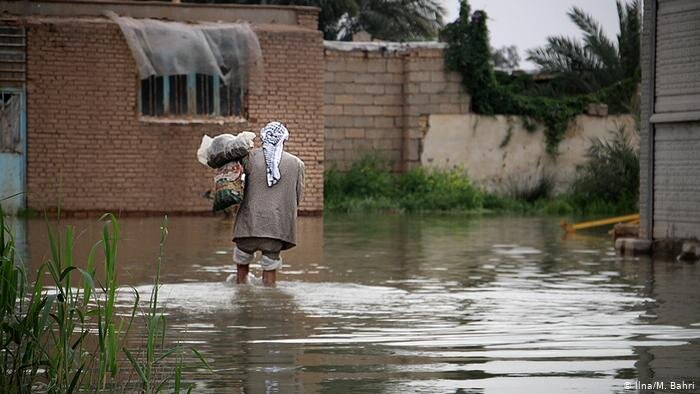Floods cause annual loss of $595m, FRWO says

TEHRAN – Annual floods bring Iran an average loss of 25 trillion rials (nearly $595 million at the official rate of 42,000 rials), head of the Forest, Rangeland and Watershed Organization (FRWO) has announced.
On average, 25 floods occur annually in Iran, ISNA quoted Masoud Mansour as saying on Tuesday.
Floods destroy resources, facilities, infrastructure, agricultural lands, and people’s livelihoods, but the FRWO, by performing a series of watershed management measures in the form of mechanical, biomechanical, and biological measures, has reduced flood damage significantly, he explained.
With the implementation of watershed management projects, 9 tons per hectare of water erosion has been reduced annually, and in mountainous areas, 570 cubic meters of water has been extracted per hectare, he noted.
Moreover, some 1000 cubic meters of water per hectare is stored in underground aquifers and prevents the entry of 4 cubic meters of sediment behind the dams, he added.
He went on to say that 83 percent of the country is managed by the FRWO. To prevent the destruction of national resources, we need to accelerate cultural development.
Depletion of forest vegetation, low rainfall, and high water evaporation have caused the country's ecosystem to be sensitive and fragile, he lamented.
“Studies show that 16.4 tons of soil per hectare is eroded by water and 21 tons per hectare is lost by wind annually,” he stated, adding, 450 cities and 8,280 villages are exposed to floods.
Watershed management saves 3,800 qanats
In recent years, 3,800 qanats have been rehabilitated through watershed and aquifer management, and people who had migrated due to water scarcity have returned to their homes, Mansour said.
The ancient qanat system of tapping alluvial aquifers at the heads of valleys and conducting the water along underground tunnels by gravity, often over many kilometers, first appeared in Iran, which was then spread to other West Asian countries, China, India, Japan, North Africa, Spain and from there to Latin America.
According to the Ministry of Energy, about 36,300 qanats have been identified in Iran, which has been saturated with water for over 2,000 years.
Qanats can come efficient to contain water scarcity due to relatively low cost, low evaporation rates, and not requiring technical knowledge, moreover, they proved sustainable being used in perpetuity without posing any damages to the environment, despite new water transfer projects, which not only puts the environment in danger but brings the country heavy economic burden.
Rangelands rich with 8,000 plant species
Referring to the country's rangelands stretching to 80 million hectares, he stated that 916,000 rural households depend on the country's rangelands to make a living.
According to Mansour, there are 8,000 plant species in the country’s rangelands, of which 4,000 species are considered medicinal plants.
Explaining the potential of the country’s rangelands, he noted that 2,000 tons of medicinal plants are exported annually.
Mansour also referring to forest functions, said that “according to the research, each hectare of forest produces 2.5 tons of oxygen annually.”
Zagros forest covers 6 million hectares of the country stretching over 11 provinces, which produces 40 percent of the country’s water, he said, adding, there are 2 million hectares called Hyrcanian or Caspian forests in the northern parts of the country, which can produce 5 billion cubic meters of water annually.
FB/MG
